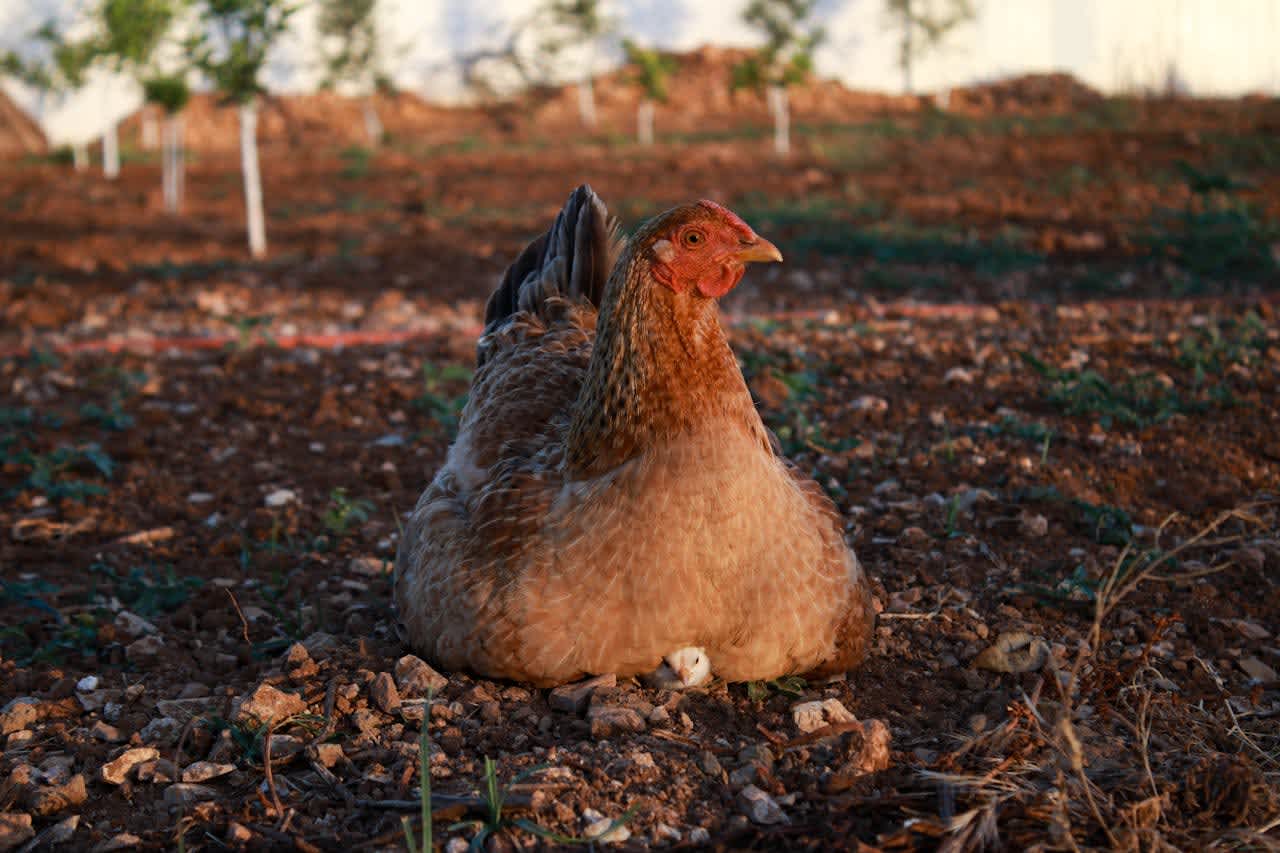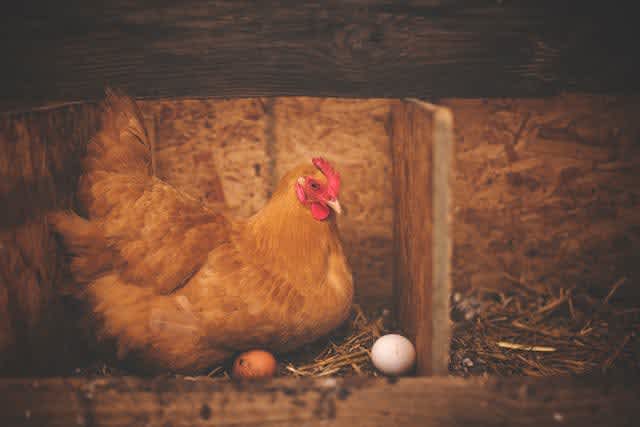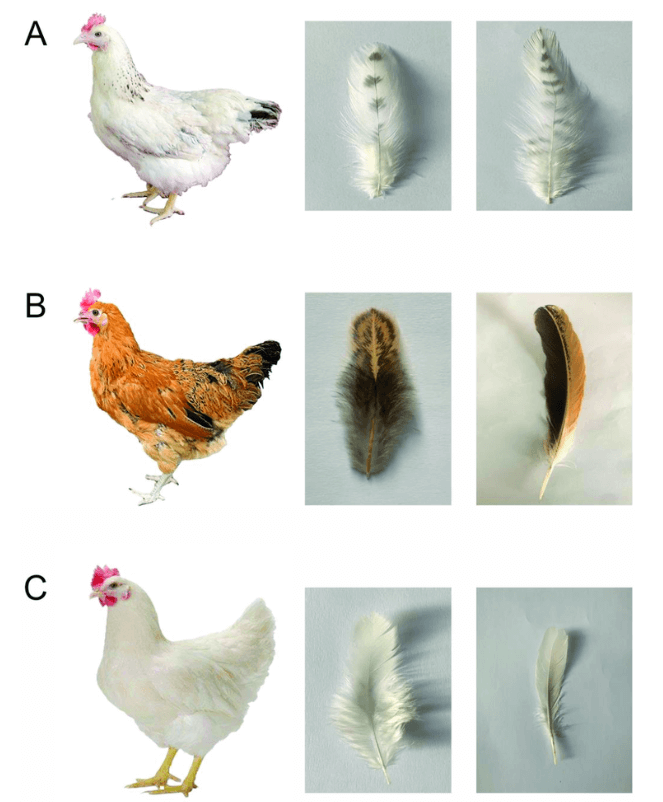When Do Chickens Start Laying Eggs? Mystery Solved!
Published: March 30, 2024

You’ve just started raising chickens. One question that keeps pecking at your brain is, "When do chickens start laying eggs?” Let's settle this now.
Chickens typically start laying eggs around 17-20 weeks of age, but factors like breed, nutrition, and daylight hours can significantly influence this start date.
In this guide, we'll unwrap the mystery of egg-laying timelines, helping you pinpoint when your feathered friends are ready to fill your nests with fresh eggs.
When Do Chickens Start Laying Eggs Generally?
Now that you know the answer is between 17-20 weeks, let's get into the details of the variability.
The Breed Can Affect Laying Ability
Chicken breeds have distinct genetic makeups that influence their egg-laying onset. We’ll break this complexity down to get a clearer idea.
Understanding Variations
A hen’s breed impacts when she starts laying eggs. Depending on the breed, egg-laying age can vary from 4 to 7 months. For instance, White Leghorns, known for their prolific egg production, can start laying eggs as early as 4 months old.
On the contrary, heavier breeds like the Sussex or Rhode Island Reds may take 6 to 7 months to lay their first egg.

Distinguishing Within the Same Breed
Notably, hens within the same breed do not all start producing eggs concurrently. This is due to possible variations in their genetics and living conditions. Breed matters in the grand orchestra of egg-laying, but nature leaves room for some improvisation.
The Value of Patience
Exerting pressure on hens to start laying early isn't beneficial. Improper practices, like modifying light exposure to stimulate egg production, can lead to health issues for the chickens in the long term. It's more advantageous to provide nutritious food, clean water, and a secure environment, enabling your chickens to lay eggs at the pace nature intended.
Remember, respecting the natural process and avoiding manipulating the hens is essential. Egg-laying is an intensive task- let your hens take the lead!
While various factors influence egg-laying, we've seen that breed plays a significant role, with variations in the timing even within the same breed. Recognizing this and patience could prove fruitful in your egg farming journey.
Decoding the Signs: How to Know Your Chickens Are About to Start Laying Eggs
The Importance of Observing Your Chicken
Observing your chickens is an essential part of predicting egg-laying behavior. The process is like learning a language, allowing you to understand unique behaviors and indicators that your chickens are about to start laying eggs. This information isn't static and can change with each breed and individual chicken personality.
Flocks have a social structure that's influenced by factors like age, size, and breed. It's essential to become familiar with the overall dynamic of your flock to notice deviations that indicate looming egg-laying behavior.
When you notice your hens showing certain behaviors or physical changes, it's a clear sign that they're about to lay eggs. Being familiar with your chickens ensures you can provide the necessary care and resources to make this critical biological process seamless for your chickens.
Behavior Indicators
Certain behaviors in chickens give strong hints that they're about to start laying eggs. For instance, you might notice the hen spending more time in the nesting area or becoming significantly vocal. They may also display a "squatting" behavior - a natural reaction when a rooster approaches, indicating maturity and readiness to mate.

Appetite Indicators
Changes in appetite can also be a significant indicator. As hens approach their laying age, they tend to eat more to sustain the energy required for egg production. Observing these behaviors gives you a glimpse into your chicken's journey toward laying her first egg.
Physical Changes
In addition to behavioral indicators, physical changes in your chickens can reveal impending egg-laying. One of the overt signs is the hen's comb and wattles becoming brighter and larger. This usually accompanies the widening area between the hen's pelvic bones to accommodate egg production.
Another key indicator to watch for is a change in the color and condition of their feathers. The feathers usually become glossier and deepen in color before the birds lay their first egg.

Recognizing these signs early enables proper preparation, ensuring a less stressful environment for your chickens and a smoother transition into egg-laying. In the long run, this attentive care could potentially increase egg production, maintain the health of your birds, and facilitate a harmonious poultry environment.
Finally, while observing these signs gives a hint, it's crucial to remember that every chicken is unique. Egg-laying can still be unpredictable, owing to factors we will discuss in the subsequent sections.
Influencing Factors: What Affects When Chickens Start Laying Eggs?
The Impact of Diet on Egg-Laying
A well-balanced diet significantly influences not only the overall health of the chickens but also their egg production capabilities. Addressing the basic nutritional needs of chickens involves opting for a feed that contains the essential mix of proteins, vitamins, and minerals.
Protein: Chickens need plenty of proteins for feather formation and egg production. A diet deficient in proteins may result in reduced egg production.
Foods with Protein include:
Almonds
Cooked Beans
Broccoli
Calcium and Vitamins: Calcium is essential for a strong eggshell, while vitamins like vitamin D help absorb calcium. Incorporating foods rich in calcium and vitamins can improve egg-laying frequency and the quality of eggs.
Foods with Calcium include:
Almonds
Apples
Bell Peppers
Grains and Grit: Offering grains as part of their diet can boost energy supply. Grit is essential for digestion and can help in absorbing nutrients from grains.
While formulating the diet, ensure it aligns with their life stages since pullets (young chickens), laying hens, and mature hens require different nutritional profiles.
The Role of Light Exposure in Egg-Laying
Exposure to light is a critical factor in triggering egg-laying in chickens. Hens usually require 12-14 hours of daylight to lay eggs consistently.
Natural Light: During summer, there is naturally more daylight, and chickens tend to lay more eggs. The laying cycle may decrease as days shorten in winter.
Artificial Light: Unlike atmospheric conditions, artificial lights can help maintain egg production during darker months. However, this should be done responsibly to ensure the chickens aren’t stressed or overworked. A timer can be used to automate the process. However, it's encouraged to allow hens a rest period, which aids in their overall health and longevity.
Encouraging Egg-Laying: How to Foster an Ideal Environment for Your Chickens
Setting Up Nesting Boxes for Your Chickens
Providing proper nesting boxes boosts egg-laying consistency. The ideal nesting box is private, secure, and comfortable.
For standard-size chickens, nest boxes should be 12” by 12” by 12”.
For larger hens, increase up to 14".
To make it more appealing,
Select a quiet corner obscured from regular human traffic.
Keep it 2 to 3 feet off the ground. While not required, this helps with keeping rodents out.
Fill it with soft material like straw or wood shavings.
Preventing overcrowding is essential as it leads to stress, which can hamper egg production.
Maintaining a Calm and Stress-Free Environment
Keeping chickens stress-free ensures a steady egg production rate. Stress can atrophy the egg production of a laying hen. Here are a few ways to provide a serene environment:
Provide plenty of space for each hen. A minimum of 3-4 square feet inside the coop and 6-8 square feet for larger birds. Overcrowding often leads to anxiety and a decline in egg yield.
Establish a regular routine, as chickens are fond of repetition. Any disruption, loud noise, or sudden change might trigger stress.
Similarly, your chickens will get used to feeding, cleaning, and gathering eggs at specific times, reducing their anxiety levels.
Maintain safety in their environment. Predators can easily stress your flock, even their mere appearance or scent. Secure the coop and provide proper lighting to keep unwelcome visitors away.
Implementing these practices will give your chickens the ideal conditions for consistent egg laying, moving us one step closer to solving the conundrum of when chickens start laying eggs.
What to Expect: The First Eggs and Beyond
Understanding the Variations in the First Eggs
When hens begin egg-laying, hobbyists and commercial poultry farmers often notice the initial eggs are exceptionally small. This unique phenomenon isn't cause for alarm but a characteristic trait before hens reach their egg-laying prime.
The first eggs also often have more rigid shells. As hens age and lay eggs continuously, the shell gradually becomes thinner.
Later, hens might lay unusually large eggs, so farmers should not be surprised to find double-yoked eggs. These variations are intrinsic to the natural egg-laying cycle of chickens.
Proper Handling and Storage of Fresh Eggs
Egg handling and storage are more than merely nest gathering and refrigerating. When correctly managed, fresh eggs can last for weeks, extending the consumption period and reducing waste.
Once the hen lays the egg, it automatically seals the pores on the shell with a protective layer called a bloom. When intact, the bloom can preserve the egg's freshness, preventing bacteria from getting in. It's best not to wash home-laid eggs until ready to use them, as this keeps the bloom intact.
For long-term storage, keep unwashed eggs at cool temperatures. In Europe, fresh eggs are often stored at room temperature, while in the U.S., refrigeration is the norm.
Remember, eggs should be handled with clean hands to avoid bacteria transfer from human to egg. Cracked eggs should be used immediately to prevent spoilage.
What's the Best Way to Store Eggs?
For optimum shelf life, store fresh eggs in the lower shelf of the refrigerator, where they are colder. The egg tray on the refrigerator door is actually the worst place to store eggs, as the temperature fluctuates every time the door is opened and closed.
With knowledge about the appearance and variations of the first eggs and effective handling and storage practices, chicken owners can ensure their bounty of fresh eggs stays at its highest quality for longer.
Understanding Chickens: The Basics of Chicken Behavior and Egg-Laying
The Life Cycle of a Laying Hen
No hen starts with the ability to lay eggs. When it hatches, a chicken undergoes a particular life cycle before transitioning into a laying hen.
Hatching and Growth
In the first month, chicks are vulnerable and dependent on warmth and feeding. Their nourishment decides their wellness and growth. Whatever nutrient intake they have sets the foundation for their egg-laying capabilities later in life.
Adolescence Stage
In the second phase of their life cycle, chickens go through adolescence, similar to humans. This stage is characterized by feather growth and increased feed intake and lasts for about 15 weeks.
Pre-laying Stage
Before laying eggs, the chickens undergo another phase, during which they showcase changes in behavior, diet, and feather color. Many packing houses measure feed weight to calculate egg production progression.
Common Chicken Behaviors Related to Egg-Laying
Chickens’ behavior offers a window into their world, and noticing them can give an idea about their egg-laying cycle and health.

Nesting Behavior
Nesting behavior is primarily associated with egg-laying hens. When the hen is about to lay an egg, it exhibits peculiar nesting behavior, such as seeking privacy and making comfortable nests. A nesting hen can also become highly territorial and protective of her eggs and the nest.
Squatting Behavior
Squatting is another prevalent behavior among hens near egg production. During squatting, a hen lowers its body when someone tries to pet it. This behavior indicates that egg laying is imminent, mainly within a week. Squatting is a chicken's natural response to mate, ultimately leading to egg production.
Changes in Combs and Wattles
The combs and wattles (fleshy, thin lobes of skin hanging down from the lower side of a chicken's head) of chickens change color when they start laying eggs. An egg-laying chicken will possess bright red combs and wattles, one of the strongest indicators of active egg production.
Conclusion
Chickens lay their first egg between 17 and 20 weeks of age. Factors such as breed, diet, and daylight exposure can accelerate or delay this process.
By understanding your flock's needs and behavior, you'll be better equipped to provide them with the right environment and care - ensuring consistent egg production.
So, take an active role. Monitor your chickens, adjust their diet, and monitor their exposure to daylight. And remember, patience is key. They all start laying when they're ready.
Keep track of all your cattle with the #1 Cattle Management Software
Try out Ranchr today for free